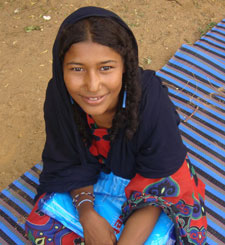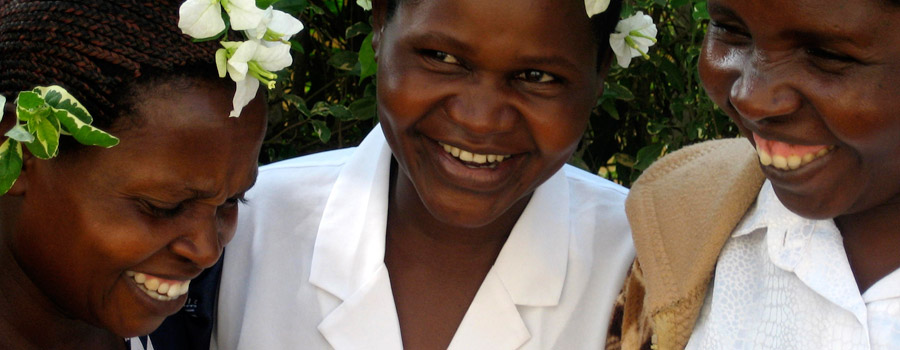Transformation des vies :
L’histoire de Agaicha

Today, I am 20 years-old. My father is the head of our village, and I am his 13th daughter. When I was 15, my father arranged my marriage with the head of our neighbor village. Soon after I married, I was pregnant. When I went into labor, it was very difficult. I spent five days laboring in the hands of the village women, battling for my life and battling to give birth. But I could not.
On the sixth day, my uncle took me from the village to the nearest health center, 65 km away. Once we got there, an unskilled health provider pulled the baby out by force. My son was dead. The following day, my torment started: I could not control my bladder anymore.
Agaïcha’s experience of prolonged and obstructed labor is a major cause of maternal death and disability. Often, labor is prolonged when the women’s pelvis is too small or the baby is too large for a vaginal delivery. This type of labor happens in up to 5% of births and causes 8% of maternal deaths. Adolescent girls, like Agaïcha, may be especially at risk for obstructed labor since often their pelvises are not yet fully developed.
In cases like Agaïcha’s, when labor that is prolonged for even 24 hours, it can compress the tissues between the baby’s head and the woman’s pelvis, cutting off blood flow to the women’s bladder and rectum. The tissue can die within three to 10 days and lead to an opening, or fistula, between the vagina and the bladder and/or rectum. Obstetric fistula can lead to chronic incontinence and severe nerve damage, which can affect a woman’s ability to walk. In up to 90% of cases, the baby is stillborn or dies within weeks.
Obstetric fistula can often be prevented by the careful monitoring of childbirth by a skilled health provider who can undertake or refer the woman for a Caesarean section if necessary, Often, an obstetric fistula can also be surgically repaired.
“After I came back from the health center, my friends and most of my in-laws family deserted me. They insisted I return to my village to be treated. I went back feeling ashamed. At age 16, this rejection and isolation was more painful and destructive than my physical handicap.
At first, when arrived back at my parents’ house, everyone took very good care of me and I began to feel like I would heal. But after a few days, people started to become suspicious of me. I was eating by myself and everyone was avoiding me as if I were contagious. I was completely disillusioned. Two years before, I had been a princess that everybody looked up to. Now, I was just a wreck. I wanted to hang myself and end it all. I thought that if my mother had been alive, she would have taken good care of me. But she had died of a massive hemorrhage while in labor.
Things went on like this for two years. Then my father heard on the radio that it’s possible to treat this sickness, the urine leakage, in Gao. It was then that I realized how much my father loved me. He gave up everything he had to take me to Gao and stay with me there for 45 days. He prayed night and day that I would get better. In 2009, I underwent surgery. Today, I am healed, and I have been dignified. I can go to the ceremony and do all the things that women can normally do.
When my husband heard that I was healed, he sent a delegation to come and pick me up, but I refused categorically. But I had the feeling that my parents were going to yield, so I decided to flee to Ménaka and then to Gao. There I was taken in by the manager of a non-governmental organization (NGO) called Greffa. She really helped me see the light at the end of the tunnel. Now, I help this NGO to help other women who are suffering from the same disease. I also raise awareness about this condition in villages. During the campaigns for fistula repair, I stand by the patients to provide moral support.
Every time I tell people about my story, I end up in tears because nobody can possibly imagine what I had to go through. That is the reason why I decided to dedicate my life to helping the thousands of girls and women who experience this tragedy and to do everything I can to eradicate fistula. I am really thankful to the hospital staff and the USAID Fistula Care Project for making this possible.
This story was originally published by the U.S. Agency for International Development on March 8, 2011.
![[ Skip Navigation ]](../../data/images/c.gif)



